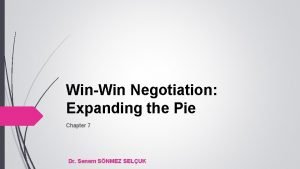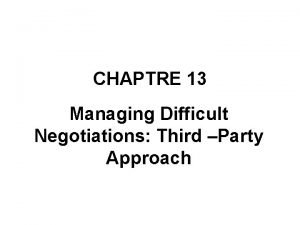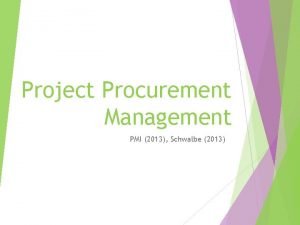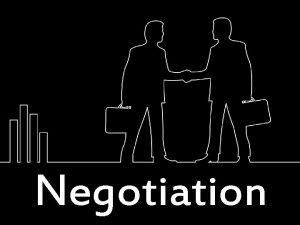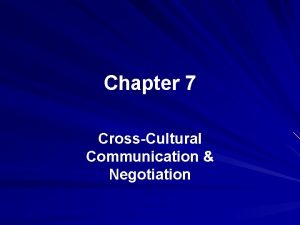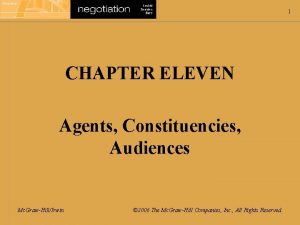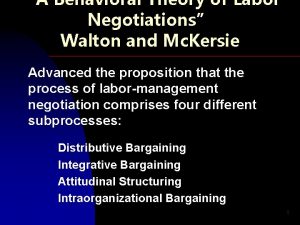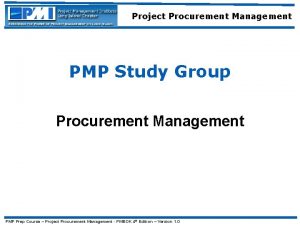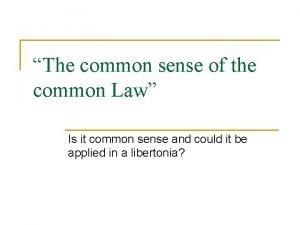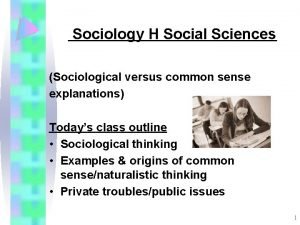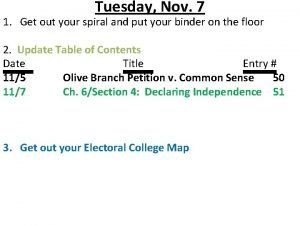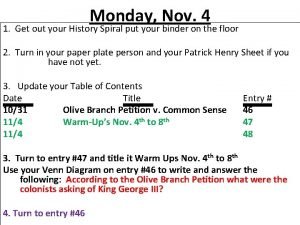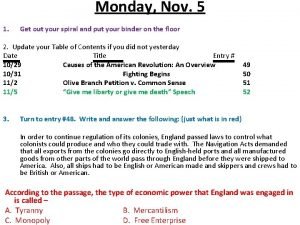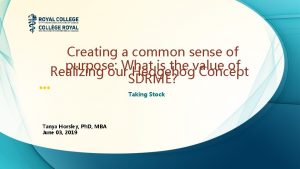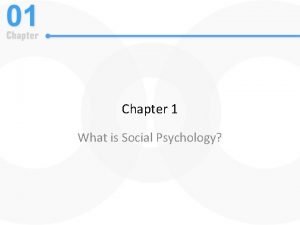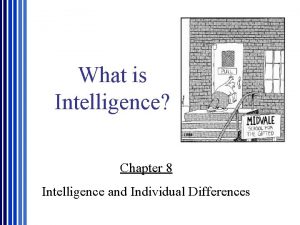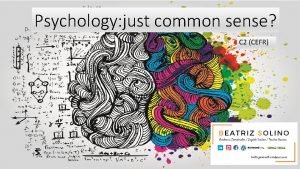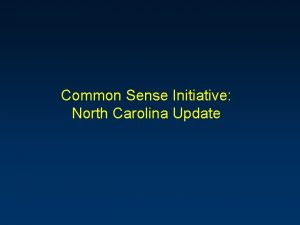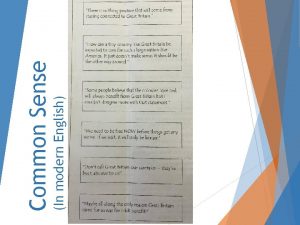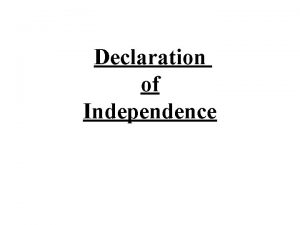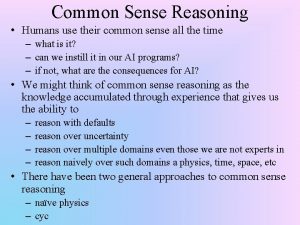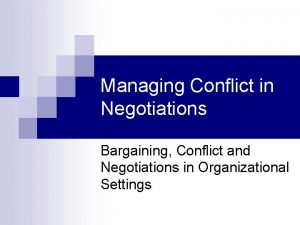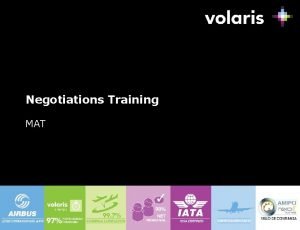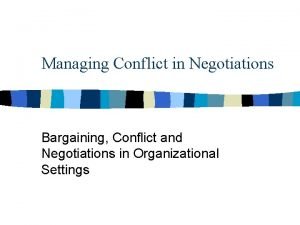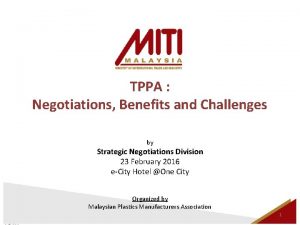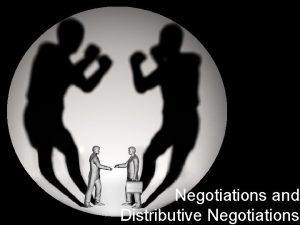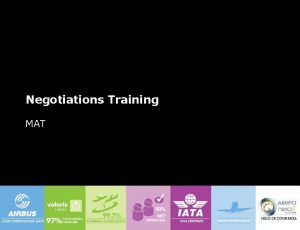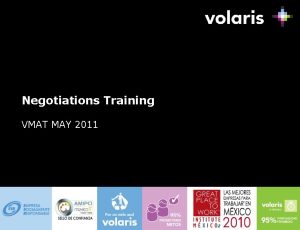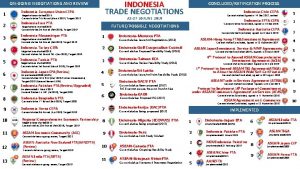Common Sense Negotiations Module 11 1 Overview Common
































- Slides: 32

Common Sense Negotiations Module 11 1

Overview Common Sense Negotiations • Practical steps in preparing and conducting formal negotiation. • Most important negotiation technique with review of other basic techniques to influence reasoning, power and rapport. • ZOPA (zone of possible agreement) and BATNA (best alternative to a Negotiated agreement). 2

Learner Outcome Students will: • Recall the common traits in win/win principled negotiations. • Recognize in preparation for negotiations, the importance of always providing the other party with an agenda of items to be negotiated. • Recall the four important points in setting up for negotiations. 3

What Matters Most Bargaining power? Aspirations? Skill of the negotiator? 4

Negotiation Skills are Still Important • • • Plan carefully. Gain management support. Effectively apply bargaining techniques. Communicate effectively, listen carefully. Tolerate conflict while searching for agreement. Project honesty. Be willing to compromise. Foster team cooperation. Apply good business judgment. 5

Two Types of Negotiations Win/Lose (distributive) • • Participants adversarial. Objective is victory. Distrust. Demand concessions. Win/Win (principled negotiations) • • Participants work cooperatively. Maximizes value to all parties. Separates people from the problem. Options for mutual gain. 6

Win/Lose Negotiators • • Rely on power to force the other party. Use deceptive tactics. Focus on positions rather than long-term satisfaction. Are argumentative. Show reluctance to make meaningful concessions. Are highly competitive and mistrustful. Don’t expect additional business. 7

Consequences of Win/Lose • Suppliers may be forced out of business. • High quality suppliers may not want to do business in the future. • As suppliers exit, risk of poor quality and high prices increases. 8

Emphasize Importance of Win/Win • Winning is more perception than result. Never gloat. • A negotiator’s behavior is the primary influence. • Exhibit win/win behavior before, during and after negotiations. 9

Spectrum of Styles Strive for win/win, but: • Understand there is a wide spectrum between win/win and win/lose. • Win/lose traits may be justified. • Negotiators likely find themselves somewhere in between. • Try to solve problems mutually. • Foster cooperation and trust. • Every move made establishes the negotiation process. 10

Comparison of Styles Win/Win Style Principled Obtain result that is satisfactory to both sides, including fair and reasonable price. AGREEMENT Solve mutual problems, focus on issues not egos Characteristic Win/Lose style Distributive Negotiation goal Obtain the best possible deal for your side regardless of consequences to other side VICTORY Focus Defeat the other party Focus on positions, not issues Cooperation and trust Environment Mistrust and gamesmanship Negotiators attack the problem, not each other Negotiation process Tactics designed to increase relative power Focus on long-term satisfaction, improves or maintains relationships Short term gain valued over long term satisfaction, strains relationships Positive tactics to resolve issues Reluctance to make concessions Available alternatives considered Highly competitive Style Spectrum 11

Principled Negotiations Recap • • People: Separate people from the problem. Interests: Focus on interests, not positions. Options: Generate variety before deciding. Criteria: Tie the result to objective standard. 12

Negotiation Overview Preparation Influencing Techniques Stages of Negotiation 13

Preparation for Negotiations • Assemble a team. • Identify issues for negotiation • Providing the other party with an agenda of items to be negotiated assures they will have proper representation at the negotiation. • Prioritize issues. • Research. • Establish minimum, target and maximum positions. • Determine agenda order. 14

Assemble Your Team Leader • Who? Contracting officer. • What? Leads negotiations, coordinates activities. Technical Analyst • Who? Engineer, end user, technical specialist. • What? Supports with relevant facts, affected by outcome. Pricing Analyst • Who? Strategic sourcing, contracting officer. • What? Determines pricing objectives. Business Term Analyst • Who? Contracting officer, legal council. • What? Assures compliance. Inventor • Who? Any team member. • What? Develops creative solutions. 15

Identifying Issues • • Cost (total cost). Emergency response time (2 or 8 hours). Delivery frequency (daily or weekly). Freight (minimum order size). Availability (fill rate). Quality. Payment and other terms (2% net 10 days). 16

Prioritize Issues Priority 1 2 3 4 5 6 Issues Cost Quality Emergency response time Freight Availability Delivery frequency 17

Research Producer Price Index (PPI) commodities • http: //www. bls. gov/ppi/ – Bureau of Labor Statistics • http: //www. crbtrader. com/ – Commodity Research Bureau Vehicles • http: //www. edmunds. com/ • http: //www. kbb. com/ – Kelley Blue Book Companies • http: //www. greenbook. org/ • http: //hoovers. com/free/tools/bcl/ 18

Set Targets/Set Agenda Priority Issue Acceptable Target Best 1 Cost $1. 75 / lb $1. 50 / lb $1. 25 / lb 2 Quality 75 / 25 80 /20 90 / 10 3 Emergency response time 8 hour 4 hour 2 hour 4 Freight free / $100 min. free / $50 min. free / no min. 5 Availability 90% guaranteed 95% guaranteed no backorders 6 Delivery frequency weekly 2 x weekly daily 19

Influence Techniques Reasoning Power Rapport 20

Reasoning • • • Budget Disclaimer Professor Quid Pro Quo Offer/Counteroffer Split the Difference 21

Power • • • Blame the Third Party (statutes) Limited Authority/Missing Person Dangle the Carrot Surprise Nonnegotiable Uproar 22

Setting Up Negotiations • • Create an agenda. Identify time and location. Identify participants. Require a decision maker. 23

Stages of Negotiation Rapport Setting Exploration Hard Core Bargaining Closure and Agreement 24

Rapport Setting (Cont. ) Make introductions. Manage tension Achieve comfort level/common ground. Establish/maintain relationships. • Make a connection. • Listen carefully. • Take notes. • Convey fairness/honesty. • Be respectful. 25

Exploration Emphasize purpose (discovery not negotiation) • Complete analysis, get the facts first, be patient. • Once negotiation begins, fact finding ends. Ask questions (open ended, clarifying) • What if; or would you consider? Active listening (paraphrase) • Increase value. Share information • Identify new options. Establish opening needs and positions • Zone of Possible Agreement/conflict range. 26

Zone of Possible Agreement Seller wants at least $1, 000 Buyer will spend no more than $2, 000 ZOPA Buyer will spend no more than $1, 000 Seller wants at least $2, 000 Conflict Range 27

Hard Core Bargaining Exert influence. • Don’t underestimate the power a buyer has, it is influential. Show assertiveness. Use silence. Employ negotiation techniques. Resolve conflict range. • Pay attention to the bidder’s concerns. Settle disagreements. • Look for win/win opportunities. 28

BATNA Best Alternative to a Negotiated Agreement Have a plan in place should the negotiations fail to result in a contract; for example: • Is the item/service available from a federal contract? • Is an alternative solution workable? 29

Closure and Agreement • • Summarizes and documents results. States expectations. Defines roles and responsibilities. Reduces implied agreements. 30

Top 10 Negotiation Mistakes 1. Negotiating with the wrong people. 2. Poor preparation or lack of information. 3. Not providing advanced topics for negotiations. 4. Not preparing the team. 5. Not setting high enough goals and targets. 6. Focusing on price. 7. Not uncovering the other side's real needs. 8. Getting emotional. 9. No closing or concession strategy. 10. No documentation/agreement of conversation. 31

CONTINUE TO MODULE 12 32
 Narrow sense heritability vs broad sense heritability
Narrow sense heritability vs broad sense heritability Narrow sense heritability vs broad sense heritability
Narrow sense heritability vs broad sense heritability Expanding pie
Expanding pie Managing difficult negotiations
Managing difficult negotiations Control procurement process
Control procurement process Benefits of negotiation
Benefits of negotiation Cross cultural communication in business negotiations
Cross cultural communication in business negotiations How agents, constituents and audiences change negotiations?
How agents, constituents and audiences change negotiations? A behavioral theory of labor negotiations
A behavioral theory of labor negotiations Types of negotiations
Types of negotiations Procurements
Procurements C device module module 1
C device module module 1 Common sense sociology
Common sense sociology Define minarchy
Define minarchy Examples of common sense and sociological explanations
Examples of common sense and sociological explanations Right attitude and common sense
Right attitude and common sense Cultural common sense
Cultural common sense Olive branch petition and common sense venn diagram
Olive branch petition and common sense venn diagram Venn diagram of olive branch petition and common sense
Venn diagram of olive branch petition and common sense Tischler sociology
Tischler sociology Common sense is published
Common sense is published Olive branch petition and common sense venn diagram
Olive branch petition and common sense venn diagram Common sense education fair and square
Common sense education fair and square Common sense of purpose in the workplace
Common sense of purpose in the workplace Social psychology and common sense
Social psychology and common sense Crystallized intelligence psychology definition
Crystallized intelligence psychology definition Common sense in research methodology
Common sense in research methodology Psychology just common sense
Psychology just common sense Common sense vs intelligence
Common sense vs intelligence In common sense, thomas paine argued that
In common sense, thomas paine argued that Idioms for problem solving
Idioms for problem solving Common factors of 18 and 30
Common factors of 18 and 30 Common anode and common cathode
Common anode and common cathode


